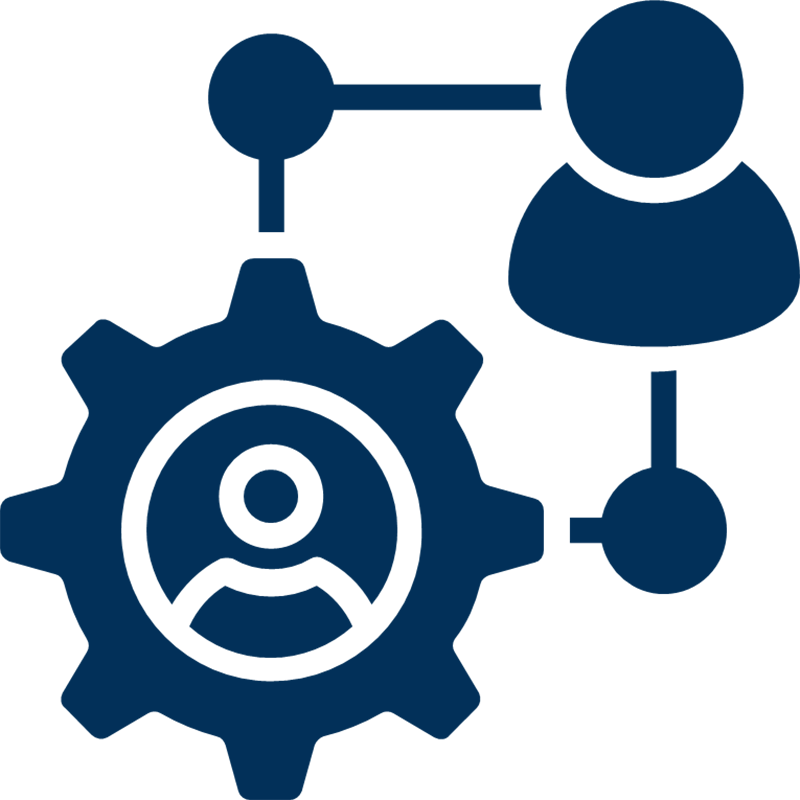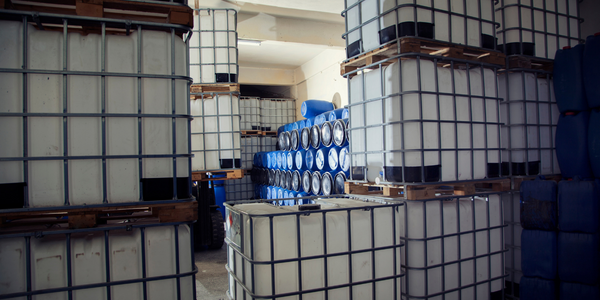Ķ┐ćń©ŗµÄ¦ÕłČõĖÄõ╝śÕī¢

µ”éĶ┐░
Ķ┐ćń©ŗµÄ¦ÕłČÕÆīõ╝śÕī¢ (PCO) µś»Õ£©õĖŹĶ┐ØÕÅŹĶ┐ćń©ŗń║”µØ¤ńÜäµāģÕåĄõĖŗĶ░āµĢ┤Ķ┐ćń©ŗõ╗źń╗┤µīüµł¢õ╝śÕī¢õĖĆń╗äµīćÕ«ÜÕÅéµĢ░ńÜäÕŁ”ń¦æŃĆé PCO ÕĖéÕ£║ÕÅŚÕł░Õ»╣ĶŖéĶāĮńö¤õ║¦µĄüń©ŗŃĆüÕ«ēÕģ©ÕÆīÕ«ēõ┐ØķŚ«ķóśńÜäķ£Ćµ▒éõĖŹµ¢ŁÕó×ķĢ┐õ╗źÕÅŖĶāĮÕż¤ÕÅ»ķØĀķó䵥ŗµĄüń©ŗÕüÅÕĘ«ńÜäńē®ĶüöńĮæń│╗ń╗¤Õ╝ĆÕÅæńÜäµÄ©ÕŖ©ŃĆéõ╗ĵĀ╣µ£¼õĖŖĶ»┤’╝īÕÅ»õ╗źĶ░āµĢ┤õĖēõĖ¬ÕÅéµĢ░õ╗źÕĮ▒ÕōŹµ£ĆõĮ│µĆ¦ĶāĮŃĆé - Ķ«ŠÕżćõ╝śÕī¢’╝Üń¼¼õĖƵŁźµś»ķĆÜĶ┐浯Ƶ¤źĶ┐ÉĶĪīµĢ░µŹ«õ╗źĶ»åÕł½Ķ«ŠÕżćńōČķółµØźķ¬īĶ»üńÄ░µ£ēĶ«ŠÕżćµś»ÕÉ”Ķó½ÕģģÕłåÕł®ńö©ŃĆé - µōŹõĮ£ń©ŗÕ║Å’╝ܵōŹõĮ£ń©ŗÕ║ÅÕÅ»ĶāĮÕøĀõ║║ĶĆīÕ╝鵳¢ÕøĀńÅŁµ¼ĪĶĆīÕ╝éŃĆéÕĘźÕÄéńÜäĶć¬ÕŖ©Õī¢ÕÅ»õ╗źµÅÉõŠøÕŠłÕż¦ÕĖ«ÕŖ®ŃĆéõĮåµś»’╝īÕ”éµ×£µōŹõĮ£ÕæśµÄ¦ÕłČÕ╣ȵēŗÕŖ©Ķ┐ÉĶĪīÕĘźÕÄé’╝īĶć¬ÕŖ©Õī¢Õ░åµŚĀµĄÄõ║Äõ║ŗŃĆé - µÄ¦ÕłČõ╝śÕī¢’╝ÜÕ£©ÕģĖÕ×ŗńÜäÕŖĀÕĘźÕÄé’╝īõŠŗÕ”éÕī¢ÕĘźÕÄ鵳¢ńé╝µ▓╣ÕÄé’╝īµ£ēµĢ░ńÖŠńöÜĶć│µĢ░ÕŹāõĖ¬µÄ¦ÕłČÕø×ĶĘ»ŃĆéµ»ÅõĖ¬µÄ¦ÕłČÕø×ĶĘ»Ķ┤¤Ķ┤ŻµÄ¦ÕłČĶ┐ćń©ŗńÜäõĖĆķā©Õłå’╝īõŠŗÕ”éõ┐صīüµĖ®Õ║”ŃĆüµČ▓õĮŹµł¢µĄüķćÅŃĆéÕ”éµ×£µÄ¦ÕłČÕø×ĶĘ»µ▓Īµ£ēµŁŻńĪ«Ķ«ŠĶ«ĪÕÆīĶ░āµĢ┤’╝īÕłÖĶ┐ćń©ŗõ╝ÜõĮÄõ║ÄÕģȵ£ĆõĮ│ÕĆ╝ŃĆéĶ»źĶ┐ćń©ŗńÜäµōŹõĮ£µłÉµ£¼Õ░åµø┤ķ½ś’╝īÕ╣ČõĖöĶ«ŠÕżćõ╝ÜĶ┐浌®ńŻ©µŹ¤ŃĆéõĖ║õ║åõĮ┐µ»ÅõĖ¬µÄ¦ÕłČÕø×ĶĘ»õ╗źµ£ĆõĮ│µ¢╣Õ╝ÅĶ┐ÉĶĪī’╝īĶ»åÕł½õ╝Āµä¤ÕÖ©ŃĆüķśĆķŚ©ÕÆīĶ░āµĢ┤ķŚ«ķóśÕŠłķćŹĶ”üŃĆéÕĘ▓ÕģģÕłåĶ»üµśÄĶČģĶ┐ć 35% ńÜäµÄ¦ÕłČÕø×ĶĘ»ķĆÜÕĖĖÕŁśÕ£©ķŚ«ķóśŃĆéµīüń╗ŁńøæµÄ¦ÕÆīõ╝śÕī¢µĢ┤õĖ¬ÕĘźÕÄéńÜäĶ┐ćń©ŗµ£ēµŚČń¦░õĖ║ń╗®µĢłńøæńØŻŃĆé
ķĆéńö©ĶĪīõĖÜ
- Ķ┐ÉĶŠō
- Ķ«ŠÕżćõĖĵ£║µó░
- Õī¢ÕŁ”Õōü
ķĆéńö©ÕŖ¤ĶāĮ
- ń”╗µĢŻÕłČķĆĀ
- Ķ┤©ķćÅõ┐ØĶ»ü
ÕĖéÕ£║Ķ¦äµ©Ī
Õł░ 2020 Õ╣┤’╝īÕģłĶ┐øĶ┐ćń©ŗµÄ¦ÕłČÕĖéÕ£║ķóäĶ«ĪÕ░åĶŠŠÕł░ 14 õ║┐ńŠÄÕģā’╝øõ╗Ä 2014 Õ╣┤Õł░ 2020 Õ╣┤’╝īÕżŹÕÉłÕ╣┤Õó×ķĢ┐ńÄćõĖ║ 11.79%ŃĆé
µĪłõŠŗńĀöń®Č.
.png)
Case Study
Intelligence for Digital Oilfield (WellAware)
WellAware was exploring the market for a reliable solution for collecting data from its customersŌĆÖ remote well locations. According to WellAware CEO, Matt Harrison, the companyŌĆÖs customers have a tremendous need to tap into the intelligence provided by the digital oilfield. In selecting a provider for its network, WellAware compared the features of an array of communication technologies. Cellular provided adequate coverage, but at the rate of $25-$50 per month per device, the cost was extremely high. Satellite was even more expensive, in excess of $100 per month per device. As a typical oilfield consists of more than 1,000 wells, implementation of these technologies would quickly become cost-prohibitive. Additionally, cellular and satellite technologies were only able to deliver between 85-95 percent data availability and were not able to transmit data at sub-minute frequencies. This was not sufficient to meet the reliability expectations of WellAwareŌĆÖs customers.

Case Study
Improve the Efficiency and Safety of Liposuction with Data Analysis
Liposuction is a surgery that removes fat from the human body with cannula, a tube that can be inserted into the body. Extracting fat is a very complex surgery procedure. The cannula should precisely reach to the fatty tissue between skin and muscles. When the cannula is injected into deeper issue, it may damage muscle issue. If the cannula isn’t inserted enough, the fat maybe removed unevenly or causes skin necrosis. The fine senses of surgeon is certainly important.Injecting cannula and extracting fat occur 12,000 to 20,000 times per one surgery. It means that moving cannula in time-uniformly is critical. However, every patients has different types of fatty tissue and areas operated on. Due to this complexity of the procedure, skillful surgeon having plenty of experiences were favoured.

Case Study
New GHS Regulations Require New Identification Concepts
With the GHS regulations (GHS - Globally Harmonized System) the United Nations wanted to minimise the risks to human health and the environment arising from production, transport and the use of hazardous substances. Standardised danger symbols and texts now have to be used for the identification of chemicals around the world. 1200 quality products not only need to be produced, they also need to be stored and shipped in a professional manner. In April 2014, a dedicated team was set up to manage the changeover to the new GHS regulations under the umbrella of the PETROFER CHEMIE ICT (Information & Communication Technology) department. It was chaired by Roland Günther and Jonas Hartmann. They subjected the existing logistics and identification processes to some rigorous tests. They analysed and conceptualised.





